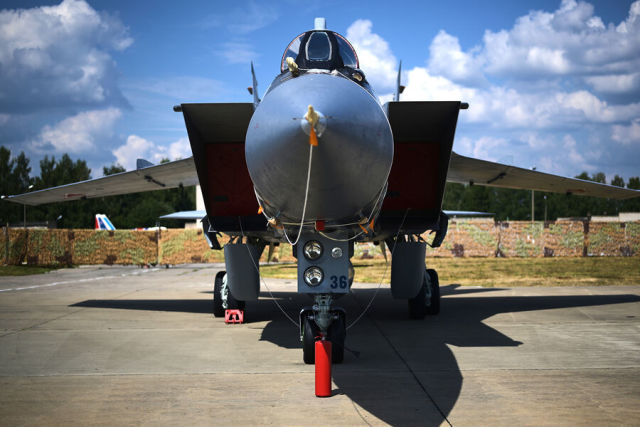General Popov explained why the Russian Armed Forces transferred MiG-31s with Dagger missiles to Kaliningrad, three Russian MiG-31 interceptor fighters equipped with hypersonic Dagger missiles were transferred to the Kaliningrad region.
They are capable of hitting targets at a range of up to 2 thousand km. at a speed that makes it impossible to intercept them with modern missile defense systems. "Newspaper.Ru" figured out for what purpose it was done.
"Three MiG-31 fighters landed at the Chkalovsk airfield near Kaliningrad. The transfer of combat aircraft was carried out as part of additional strategic deterrence measures. MiGs that have taken up round-the-clock combat duty carry the latest Russian hypersonic aeroballistic missiles "Dagger". It flies 10 times faster than the speed of sound and is invisible to missile defense systems," the Russian military department said.
In turn, Lithuanian Defense Minister Arvydas Anushauskas believes that the relocation of Russian MiG-31 fighters with Dagger missiles will not affect the military balance in the Baltic States and will not become a threat to Western countries.
"They will not change the situation, because the military potential of Kaliningrad has now significantly decreased," Anushauskas said.
On the other hand, the Polish Gazeta Wyborcza published an editorial where it spoke about the "concern of the Polish government about the transfer of fighters." The publication referred to "several high-ranking sources."
"The transfer of hypersonic Daggers to the Kaliningrad Region is more of a demonstration nature," he told the newspaper.En" Retired Air Force Major General Vladimir Popov. - These are only three missiles, the MiG-31 fighter lifts only one, after the launch of which it is forced to return to the airfield to replenish the warhead. Here you need to understand that not only MiG-31s will be in the sky, but also the entire Kaliningrad group's air wing, each group of which will solve its air tasks both on the near and far approaches. For Daggers, targets can be designated at remote distances from Kaliningrad, including in the capitals of European states unfriendly to Russia."
One of the features of the "Dagger" is launching from a height of 12-15 thousand km, the general stressed.
"Figuratively speaking, this is such a slingshot, which initially gives a high speed to the rocket at launch, and then she herself, as a sprinter, picks up the necessary pace, overcomes supersonic ten times. The ideal solution was to use the MiG-31 fighter, which is capable of accelerating at low altitude up to 1500 km / h, and at high altitude - up to 3400 km / h. The disadvantage of using this high-altitude fighter is the possibility of lifting one missile with a warhead mass of 500 kg. From the Kaliningrad region, the "Dagger" can reach London, there is less than 1500 km. Just like before Warsaw, not to mention Helsinki or Stockholm," Popov added.
Political scientist and military expert Alexander Zimovsky noted that the transfer operation took place "very quickly."
"Now it is clear that the signal from the Ministry of Defense of the Russian Federation sent to the West is completely understandable. If necessary, these missiles can be equipped with nuclear warheads, the power of which is not disclosed. And NATO countries cannot shoot down hypersonic missiles now," Zimovsky stressed.
Vasily Dandykin, a military expert, captain of the 1st rank of the reserve, agrees with this position.
"In the Kaliningrad region, three MiG-31 fighter jets with such missiles on board will be a powerful deterrent for NATO ships, which are increasingly assertively marking their presence in the Baltic Sea. MiG-31s also serve in the North, control the coast of the Arctic Ocean. Now, from the Kaliningrad airfield, all targets will become closer, up to the English Channel and to the outskirts of the Atlantic Ocean. Thus, with the help of the Dagger, it is possible to control the situation in the Baltic Sea and keep at least destroyers, even aircraft carrier strike groups in sight," concluded Dandykin.
Victor Sokirko

